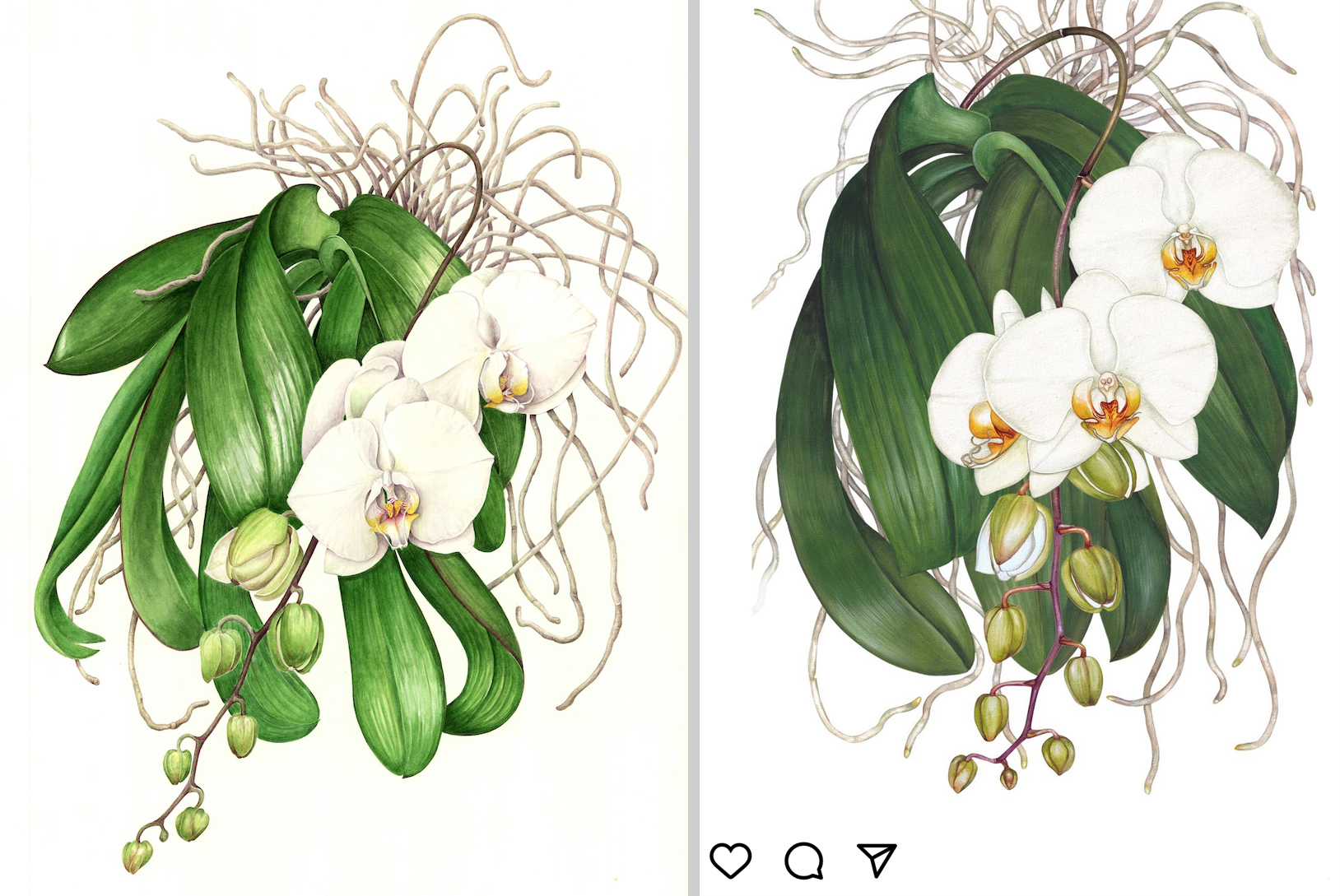Today I was scrolling through botanical art posts on Instagram when I felt the kind of spine-tingling sensation described by people who believe they’ve seen a ghost. I was looking at a painting of a white phalaenopsis orchid that appeared to be one I’d completed about twenty years ago.
I can pretty much remember every botanical piece I’ve ever painted but this one was particularly recognizable because it had been an unusual composition. It hung out over the edge of the ornate concrete pot in our sunroom by virtue of the way the plant was positioned and the weight of the spray of blooms. It was this unusual presentation that prompted me to paint it in the first place. I was definitely looking at my painting.
I retrieved a scan of the painting from my archived files and did a side-by-side comparison (my original on the left, the Instagram post the right). While there were differences, there were many elements that were a direct copy. It was too close. Essentially, it was a minimally-disguised copy of my painting.
Part of the mystery was how a painting of that age had been accessed and had shown up now. I’d removed it from my old website at least eighteen years ago for no longer being a good representation of the quality of my current work. This aspect will remain a mystery pending further investigation. In the meantime, I wanted it removed.
The offending Instagram post included contact information for someone in Indonesia. I messaged the person to ask that the post immediately be taken down. This is the prompt response I received . . .
“I’ve deleted the post titled Phalaenopsis amabilis. With the realization that in the early works on the object of orchids, I was inspired by the works of world botanists. Including one of them is you. Sorry for the inconvenience of my post. The work is the work of the early stages of learning anything about the art of botany.”
I remain unconvinced as there are still things that don’t add up. Perhaps in time it will become clearer if there was some nefarious undisclosed motive, if it was an entirely hand-painted piece or was digitally manipulated, and whether the numerous other pieces also posted by the same person were “inspired’ by the works of other “world botanists.”
For now though, this is a learning opportunity for all of us. There are lessons for both artists and those “inspired” by their work:
- Keep an eye open for misappropriation of your work and act when you come across such an incident.
- It is one thing to be inspired by a piece, and an entirely different thing to attempt to copy it in part or in whole. In any case, in botanical art our source is always a live specimen, so copying shouldn’t even be an option.
- If you’re going to be inspired by a piece to the extent that you paint something similar, acknowledge the original artist. It’s both customary and professional etiquette to declare the source.
- Misappropriating an artist’s work (even minor aspects) is reprehensible, doing so for financial gain is doubly reprehensible.
Unfortunately, it’s not the first time I’ve had to contact someone about misappropriation of my work—both painting and writing—and it probably won’t be the last. But act, I will. And so should you. And so should our associations.
But most of all, we must keep educating and promoting good practice.

